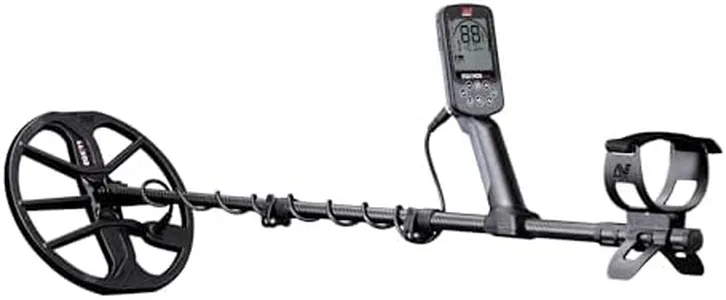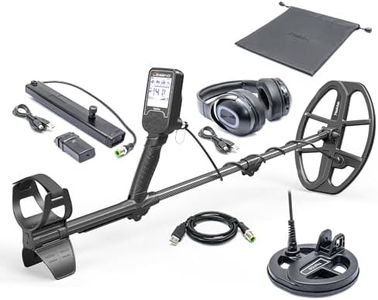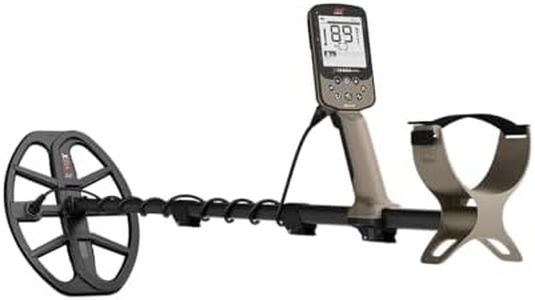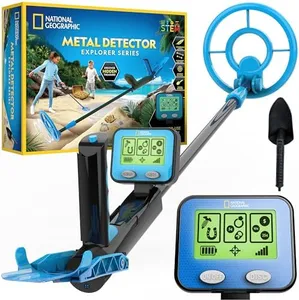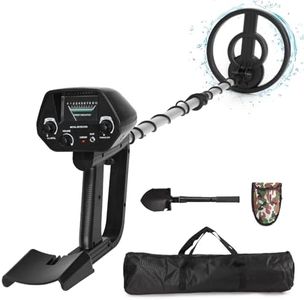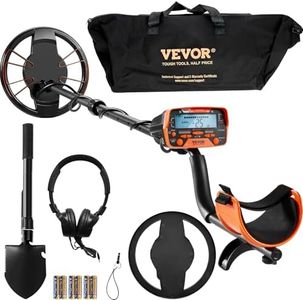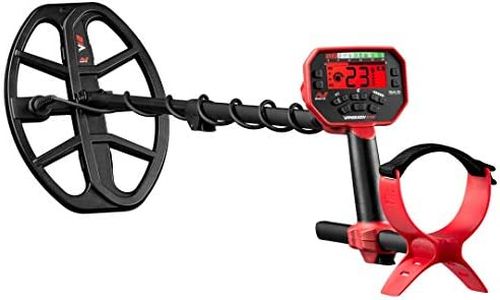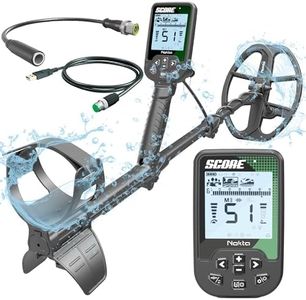We Use CookiesWe use cookies to enhance the security, performance,
functionality and for analytical and promotional activities. By continuing to browse this site you
are agreeing to our privacy policy
10 Best Saltwater Metal Detector
From leading brands and best sellers available on the web.Buying Guide for the Best Saltwater Metal Detector
Choosing a saltwater metal detector can be a bit different from picking one for dry land. Saltwater environments, such as beaches or shallow surf, have unique conditions that can confuse less advanced detectors. To find the right fit, you should understand how certain features work and relate them to where and how you plan to treasure hunt. It’s less about owning the most advanced device, and more about matching your detector’s abilities to your location and needs.Operating FrequencyOperating frequency is basically how quickly the metal detector sends signals into the ground. Lower frequencies are generally better for finding deeper and larger objects like coins, while higher frequencies excel at finding smaller items, like tiny jewelry. Along saltwater beaches, the presence of minerals can cause high-frequency detectors to give false signals, so many saltwater detectors use very low frequency (VLF) with special adjustments or pulse induction (PI) technology. As you choose, think about what you hope to find: if you’re after smaller jewelry, higher frequency might be nice, but stability in the salty sand is more important, so a detector that manages frequency for saltwater is best.
Saltwater Compatibility (VLF vs PI)Not all detectors handle saltwater equally well. VLF (Very Low Frequency) detectors can struggle in wet, salty sand and shallow surf because salt minerals trick them, though some VLF models have special beach modes to help counteract this. Pulse Induction (PI) detectors, on the other hand, are much less sensitive to mineralization, making them ideal for saltwater use but sometimes less effective at distinguishing between trash and treasure. If you plan to hunt mostly on dry sand or occasional damp areas, a good VLF with beach mode works. If your focus is on the waterline, wet salt sand, or shallow surf, PI becomes more attractive.
WaterproofingWaterproofing indicates how well the detector can handle moisture and submersion. Some detectors are only weatherproof (handling splashes or rain), while others are fully submersible for use in shallow water. Think about whether you will be in the shallow surf, wading, or strictly on the sand. Only wading occasionally? Water-resistant is fine. Planning to go into the water often? You’ll want a submersible detector with a waterproof control box and coil.
Ground BalanceGround balance is a feature that helps the detector adjust to the minerals in the ground so it doesn’t give false signals. Saltwater and wet sand are very ‘mineralized’ environments, which can confuse detectors without good ground balance. The most effective ones offer manual ground balance, letting you adjust for any beach, while some have automatic or pre-set options. If you intend to hunt at many different locations, manual ground balance gives you the most flexibility; for occasional, casual use in similar conditions, automatic might be all you really need.
DiscriminationDiscrimination is the detector’s ability to tell the difference between different types of metal. This helps you ignore less interesting targets, like bottle caps or iron nails, so you can focus on coins or jewelry. Detectors for saltwater can be less precise in high mineral areas, but good discrimination is still handy if you don’t want to dig up every bit of junk. If digging lots of targets is fun for you, focus less on this feature. If you want to save your energy for better finds, choose a detector with effective discrimination controls.
Size and WeightThe size and weight matter because beach hunts can mean hours of swinging your detector. Heavier detectors can become tiring, especially if you cover a lot of ground, while lighter ones are more comfortable and less likely to result in arm fatigue. If you plan to hunt for long periods or cover large stretches of sand, lighter models or ones with good ergonomic design are a good fit for you. If you’re only out for brief sessions, weight may matter less.
